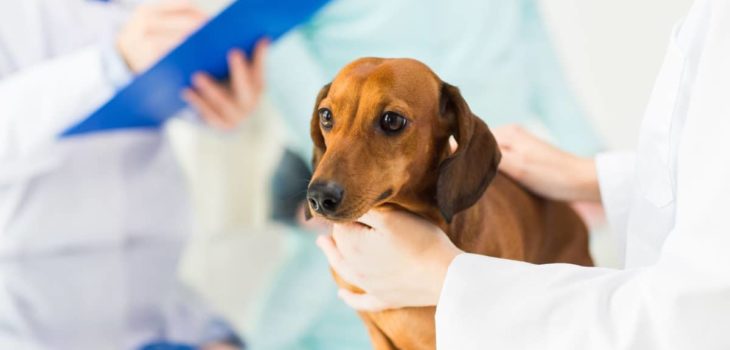Hip joint problems are a major concern for a lot of Doxie owners. So, let’s talk about the 5 big hip problems in dachshunds – causes, prevention, and treatments. Are these issues as major as Intervertebral Disc Disorder or IVDD? Are they just as likely? What exactly causes them and what can you do about them? Let’s discuss.
How Common Are Hip Problems In Dachshunds?
There isn’t an exact percentage that can be given about hip problems in dachshunds and in dogs in general, as the vast majority of cases usually go ignored and unaddressed. This is in contrast to dachshund’s back problems such as IVDD that very often get attention and the odds of them happening are more accurate. Still, we do know that hip problems in dachshunds are fairly common – more so than they are in other breeds due to dachshunds’ short legs and the tendency for gaining extra weight.
What Are The 5 Most Common Hip Problems In Dachshunds and What Causes Them?
So, here are the main hip problems in dachshunds you’ll need to watch out for:
- Hip dysplasia – This common issue is believed to have a large genetic component – that’s why breeders always test their dogs for hip dysplasia before breeding them.
- Hip dislocation – This is mostly due to physical trauma, something that the short Doxie is also prone to. It can also be caused by severe and untreated hip dysplasia.
- Legg Calve Perthes disease – The origin of Hip Necrosis or Legg Calve Perthes disease, on the other hand, isn’t exactly known yet. It’s believed to be due to blood supply deficiencies to the hip joint while the pup is growing up (6th to 9th month) but experts aren’t 100% certain at this point.
- Osteochondrosis – As with LCP disease, Osteochondrosis is with unknown origins. There too, experts suspect blood supply deficiencies while the animal is growing up but it’s also believed to have a hereditary component as well. Proper diets and exercise while the pup is growing up are believed to also reduce the risks.
- Osteoarthritis – This is a progressive inflammatory condition that’s caused by prior injury, inflammatory arthritis, and other pre-existing problems such as hip dysplasia. As such, osteoarthritis is very preventable with good care.
How Can You Prevent Hip Problems In Your Doxie?
As you can see from what the main hip problems in dachshunds are, not all of them are 100% preventable. Unlike IVDD, good care may not always protect your dog from hip dysplasia or hip necrosis. What’s certain, however, is that such good care will always reduce the risks, reduce the effects should something happen, and prolong and improve your dog’s quality of life.
So, what do we mean by “good care”? By and large, this includes the basic healthy life tips you’ve heard before:
- A good, balanced diet with plenty of bone health supplements – the last point being especially important for dachshunds compared to other breeds.
- Regular but measured exercise – your dachshund needs to lead an active life but you should make sure that you don’t “over-exercise” your dachshund. Swimming is an excellent exercise/playtime for adult and older dachshunds that need to move but have joint issues.
- Avoid obesity – this sounds like it belongs to the first point but even good food can result in obesity if you overfeed your dog. Dachshunds love to eat and put on weight very easily – something their hips usually don’t appreciate.
- Routine vet visits – bi-annual vet visits are usually recommended for healthy dachshunds. This means that you should just schedule two trips to the vet even if your dog looks 100% healthy.

Learn more about Dog IVDD Surgery Cost, Risks, Rehabilitation, And Alternatives
What Are The Treatments For Hip Problems In Dachshunds?
The treatment will depend on the condition. That being said, don’t be surprised if your vet recommends surgical intervention for a lot of hip problems in dachshunds. A simple dislocation may not need it but stuff like severe hip dysplasia, LCP disease, and osteochondrosis just necessitate surgery.
Fortunately, any good vet should be able to perform such a procedure with absolute minimum risk. From there, you should follow whatever medication, rehabilitation, and other advice your vet gives you.
Read more about: How To Carry A Dachshund With Back Problems?
FAQs
[rank_math_rich_snippet id=”s-e0777da5-6872-41fb-909a-bd11a2760543″]




